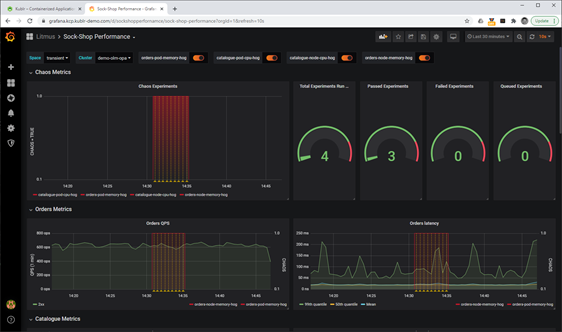Kublr Updates Management Platform for Kubernetes
Kublr has updated its platform for managing Kubernetes clusters to make it easier to manage multiple clusters.
Version 1.19 of the platform also makes it easier to manage clusters distributed across multiple types of partitions on the Amazon Web Services (AWS) platform via a revamped user interface. IT teams can now monitor Kubernetes clusters running on clouds that have mixed instance policies along with mixed spot and on-demand usage pricing model or running on the AWS Gov cloud.
Kublr CTO Oleg Chunikhin says IT teams can also now opt to create master-only clusters as part of an effort to make it easier to deploy Kubernetes across a hybrid IT environment. The Kublr control plane can now also run in a cluster with pod security policies restricted by default.
With this release, Kublr has also added full support for Helm Charts to deploy software along with provisioning clusters, and now supports Centos/RHEL 8 and AWS high availability network address translation (NAT) gateways.
Finally, Kublr has added support for automated chaos testing by adding support for the open source LitmusChaos framework running on an instance of the open source Argo continuous delivery platform, which is being advanced under the auspices of the Cloud Native Computing Foundation (CNCF).
Chunikhin says that while chaos engineering within the context of Kubernetes environments is still relatively nascent, IT teams will want to be able to make components of a Kubernetes cluster unavailable randomly during testing to ascertain the impact of such an event on an application.
Chunikhin says Kublr also plans to add support for Kubernetes clusters running on the Microsoft Azure cloud.
Kublr is gaining traction as an open source platform that provides graphical tools to make Kubernetes more accessible to the average IT administrator, he says. As the size of Kubernetes clusters fleets expands, it becomes apparent that IT administrators will be needed to manage tasks, because DevOps teams simply don’t have the time.
Many organizations are also trying to increase the rate at which they are building and deploying applications as they embrace digital business transformation initiatives more aggressively in response to the COVID-19 pandemic. As such, many organizations will conclude it makes more sense for them to enable IT administrators to manage IT infrastructure to allow developers to spend more time writing code. The challenge is making sure IT administrators have access to management platforms that allow them to keep pace with the rate at which applications are being deployed and updated on Kubernetes clusters.
A recent survey of 1,324 IT professionals conducted by the CNCF finds 92% of respondents are now running containers in production environments, with 83% reporting they are also employing Kubernetes in those environments. That compares to last year’s results showing 84% were running containers and 78% were running Kubernetes in production environments. It’s not clear when those organizations will reach a tipping point in terms of the number of Kubernetes clusters deployed that may need to be managed by IT administrators, but it’s already clear in many cases that it is approaching sooner than later.





